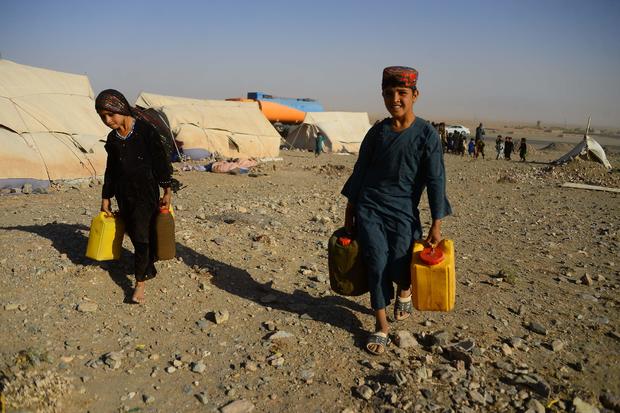
Rural Afghanistan has been shaken by climate change. The last three decades have caused floods and droughts that have destroyed crops and left people hungry. And the Taliban, probably unaware of climate change, took advantage of that pain.
Although agriculture is a source of income for more than 60% of Afghans, more than 80% of conflicts in the country are related to natural resources, according to a joint study by the World Food Program, the World Food Program. the United Nations Environment Program and the National Environment Program of Afghanistan. Protection Agency. In 2019, Afghanistan ranked sixth in the world among the countries most affected by climate change, according to Germanwatch’s global climate risk index.
Over the past 20 years, agriculture has fluctuated between 20 and 40 percent of Afghanistan’s GDP, according to the World Bank. The country is famous for its pomegranates, pine nuts, raisins and more. However, climate change has made agriculture increasingly difficult.
Whether due to drought or flood-ravaged soil, farmers in the region struggle to maintain productive crops and livestock. When they cannot grow profitably, they are forced to apply for loans to survive. When Afghans cannot afford lenders, the Taliban often intervene to sow government resentment.
“If you have lost the harvest and the land or the Afghan government has not paid enough attention [to you] then, of course, the Taliban can come and exploit it, ”said Kamal Alam, a non-resident senior member of the South Asian Center for the Atlantic Council.
The Taliban have taken advantage of agricultural stress and government distrust to recruit supporters. Alam said the group has the means to pay fighters more, between $ 5 and $ 10 a day, than they can do farming.
“[Farmers] fall in elections. That’s when they become prey to people who tell them, ‘Look, the government is fucking you and this land should be productive. They don’t help you. Come with us; we are overthrowing this government, ”said Nadim Farajalla, director of the climate change and environment program at the American University of Beirut.
In the mountainous north, snow and glaciers have melted faster and earlier than ever, sometimes flooding fields and irrigation systems, but also causing melting-related drought in winter. In the south and west, some areas have seen heavy rainfall increase by between 10 and 25% in the last 30 years.
HOSHANG HASHIMI / AFP via Getty Images
Often, these regions are let go without the proper help of the old government.
“With poverty, war and everything else, climate change is the last thing you think about,” Alam said.
Today, a third of Afghans are in levels of “crisis” or “emergency” food insecurity due to drought, a potentially more threatening danger than the historic 2018 drought that left thousands dead.
Farajalla said even Afghans who settle in urban areas to leave the stress of agriculture behind cannot yet escape the pressure of “notorious people”.
“They become destitute enough to receive a few dollars to join that party or that group.”
The ripples of these climate-rejected Afghans can last for years. Farajalla said farmers who leave their lands often leave their families behind, which possibly facilitates the recruitment of targets for extremism.
Climate change has fueled terrorism and civil unrest in other parts of the world. Boko Haram seized central, water-scarce Central Africa in 2017, when it settled along the Lake Chad basin. ISIS has taken advantage of agrarian communities suffering from extreme drought in Iraq and Syria. Farajalla said arid or semi-arid areas of impoverished countries with low levels of education and poor infrastructure are ripe for extremism.
The Taliban have not only used farmers and rural communities to strengthen their ranks, but also to help fund their efforts by imposing farmers on their territory. Most crucial, they have controlled the poppy trade in Afghanistan.
The country is the world leading supplier of opium poppies. The Taliban have not only earned billions from their illicit drug trade, but poppies require less water than other crops, providing more stable means to troubled farming communities. Poppy cultivation is most abundant in the south of the country, where the drought partly fueled by climate change has been the most severe and the Taliban the most popular.
These associations have helped the popularity of the Taliban. But since it took control of the country, the group has promised that the nation will be free of poppies, a faint political decision that would not be popular among rural communities dependent on the harvest, said Vanda Felbab-Brown, director of the Non-State Armed Actors Initiative and Senior Member of the Brookings Institution.
“If they went to seek the ban quickly, there would be a huge economic recession. It would trigger massive misery of the population. And they would have real problems maintaining stability,” he said.
“Their own fighters usually harvest poppies. For many of the fighters, poppies were the main source that helped them fund their family and themselves. They could do jihad for months, but they would have to break away to harvest because the family had food “.
